The Ultimate Guide to Home Lighting Fixtures
8 Mins Read
April 25th, 2024
Choosing the right home lighting fixtures can be challenging, with so many options and endless customization available in the market. You need to bear in mind cohesion and balance. With tons of Pinterest saves clouding your decision, you need a clear, foolproof idea of how you’re going to design your space with lighting being the cherry on top. Wiring is extremely crucial for lighting to work right and only if you plan your lights can you ensure proper wiring.
This blog will help you pick out the perfect lighting fixtures to create the effect you intend. Stick on till the end to figure out how to visualize your fixtures before buying them and getting a crystal clear idea of what works and what doesn’t.
Jump ahead to:
Depending on the aesthetics and lighting nature of each room, you can choose between architectural lighting and decorative lighting.
| Architectural lighting fixtures | Decorative lighting fixtures |
| Used for functional illumination | Gives you a pleasant ambiance |
| Accentuates architectural features | Boosts aesthetics |
| Provides discreet illumination | Slightly affordable compared to architectural lighting |
| Need many to completely illuminate a space | Need one or a few to do the trick |
Of the following fixtures you see below, you can choose lights in similar colors and materials but in different shapes, or follow the same shape, in different materials. This is so you create unifying elements and visual interest in the space with the right lighting fixtures.

They are sleek, modern, unobtrusive flat fixtures perfect for minimalistic homes. They are timeless, but not perfect general illumination of the entire room. They have a narrow beam, so several lights have to be installed to ensure even lighting.
If you’ve seen many contemporary homes or newly built homes when you were honing on the decision to build a new home, you’d have noticed many new, modern homes have recess lighting in one form or the other.
One of the cons of using recess lighting is that they have a narrow beam so several lights have to be installed to ensure an even light spread. Use them generously under the cabinet, on a floating shelf, or walls and ceilings. They instantly exude a luxurious look, regardless of whether the house is big or small.



One of the most satisfying modern lighting options. It accentuates architectural details and artwork and that’s why you find them used generously in museums and art galleries. They are quite versatile, in that they can be installed on tracks, walls, and ceilings. Spotlights have a narrow beam that can create harsh shadows.
But, that aside, they are highly customizable, and if you have a single light source in the home that’s not illuminating the space very well, use spotlights to replace it and distribute track lights linearly throughout the space. Generally replacing one form of lighting with another takes a lot of electrical wiring change. But not with spotlights.
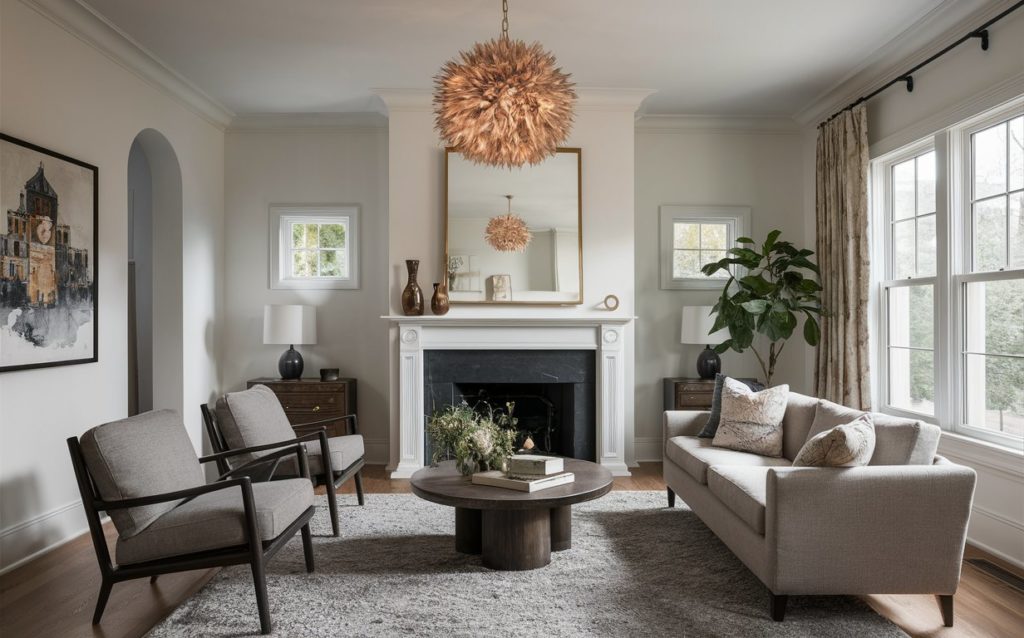


Talk about a mark of royalty, and you can’t forget chandeliers. Be it a small home or a palatial mansion, a chandelier (available in innumerable varieties and price ranges) instantly elevates the look of your home. It’s any light with multiple arms and branches. They become the focal point of any room they’re in and have been one of the most coveted lighting options for many decades.
Blends in perfectly with any interior design style you’re going with. Just make sure to figure out the height of the ceiling, and the height of the chandelier, so that you don’t use a huge crystal chandelier in an 8-foot ceiling.
Read also – 3D Floor Plan in Architectural and Interior Design
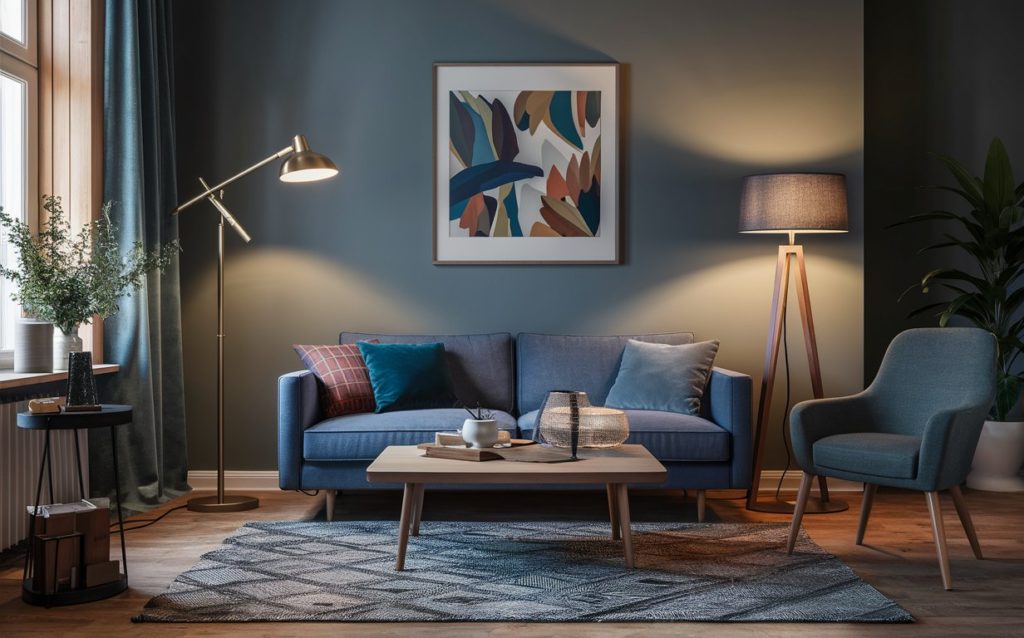


They are freestanding ambient/task lights that can be placed anywhere. Floor lamps make a compelling statement or merge along with the background based on where they’re placed and the sculptural details in them.
They range widely from artistic to understated lights. Perfect for reading nooks, and lounges. The only issue with them is they take up precious floor space, and the wiring cords need to be planned well in advance, so they don’t look messy and disturb the aesthetics of the space.
Read also – Importance of Accessories in Interior Design
Table Lamps
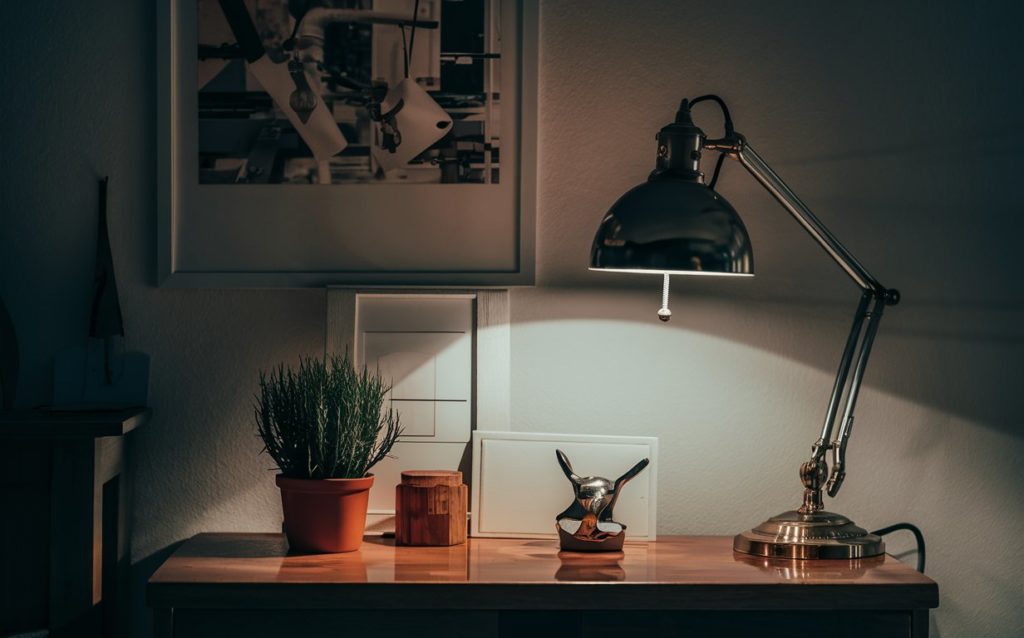


Table lamps are mini floor lamps. They’re versatile and can be used for ambient/task lighting. Most table lamps come with a swing arm that can be adjusted for focused lighting. Cable management can be an issue with table lamps as having too many cords crawling about can clutter the space you’ve spent a lot of time designing. When it comes to lamps, their light spread is determined by the shade they have.
| Opaque screens | Solid screens | Directional light |
| Made of fabric or glass shades | Made of metal or solid plastic shades | Super functional |
| Gives a soft glow and a cozy atmosphere | Gives ambient lighting in a downward direction | Lights only a particular space, but does it completely |



Installed on walls to hide an ambiance decoratively. Mostly placed in bathrooms for localized lighting. But, they’re also ideal for accent or task lighting. In other rooms of the house, use them in pairs to highlight the objects between them (a mirror, fireplace mantle, artwork, etc). Sconces, or wall sconces can also serve as night-side table lamps where you have limited to no space to get a proper night-side table and a lamp.
They are beautiful to look at, functional by nature and can act as standalone pieces without having any other type of lighting in the room. Use wall sconces for outdoor lighting as well. They suit your aesthetics when used for soft illumination on porches and driveways. Gives the impression of a grand home within.
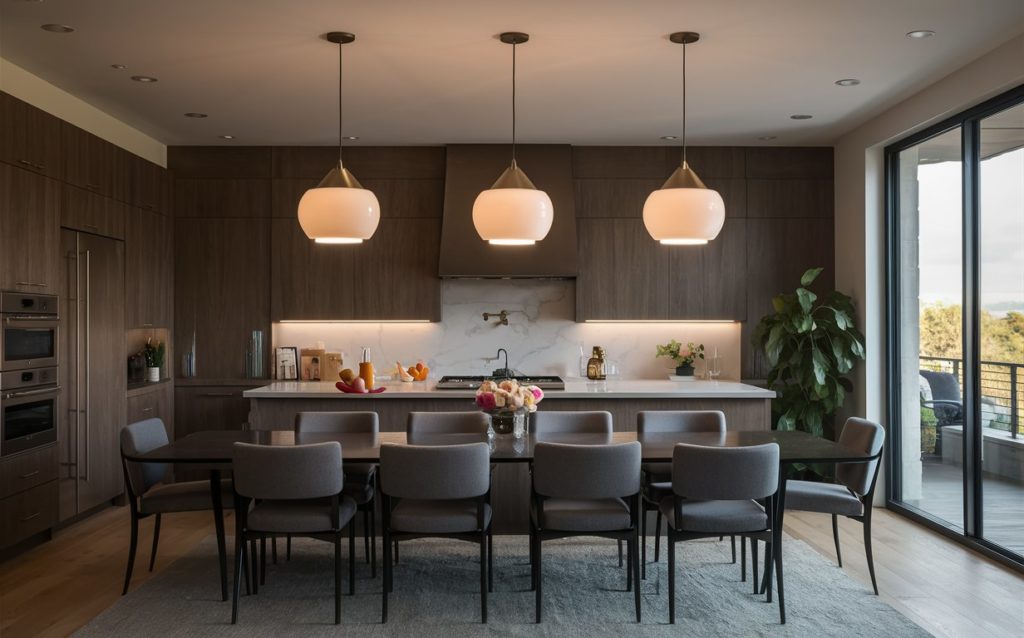


Pendant lights are any lights suspended from the ceiling. They come in a multitude of designs, and options of colors, materials, and finishes to choose from. You can also find pendants classified based on their variety – single-ball pendants, to multi-light pendants with 3-5 lights.
With linear rectangular pendant lights, you hit a middle ground between architectural and decorative lights. Pendant lights are also used over dining tables and kitchen islands to offer an even light distribution. Have longer tables or islands? Spread out the lights and use 2-3 lights instead of one, to avoid dark spots and shadows.
Read also – Best Kitchen Lighting Ideas and Trends to Style Your Kitchen
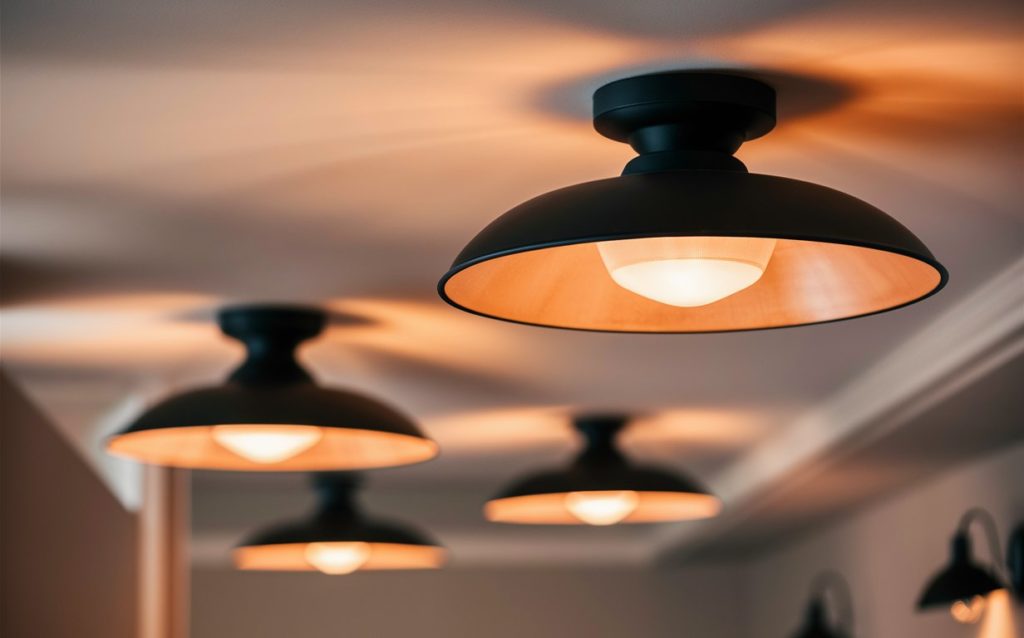


These lights are attached to the ceiling and sit there compactly, close to the ceiling, with no intrusion to any other lights. They’re amazing for general illumination and provide broad dispersed light. If you have low ceilings in your home and want an unobtrusive light, flush mount lights are the way to go. The only con with these lights is that they’re not adjustable, and don’t have much of an impact on the interior design.
Several models of ceiling fans come with a built-in lighting feature in them. They’re installed to suit a wide variety of interior design styles, no less. Often installed in the center of the ceiling with added functionality. There are more cons to this type of light than pros, with some of them being:
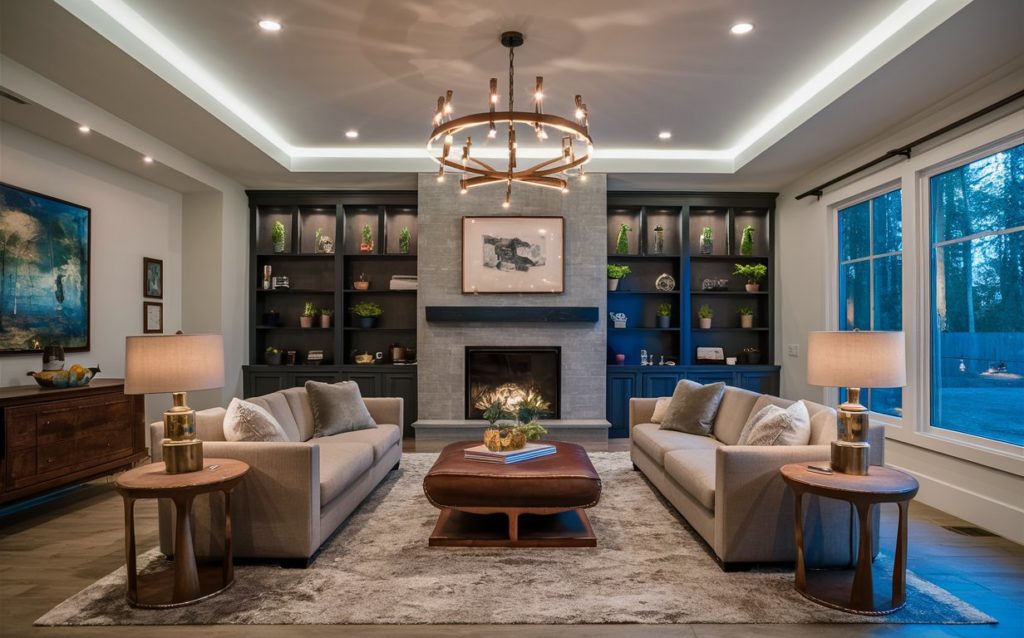


Image credits: All images featured in this blog are AI-generated or created using Foyr Neo, an advanced interior designing software.
| Jackson Casimiro, Lighting Specialist says, “There’s a reason why indirect lighting, like cove lighting, looks so good in interior design. By bouncing light off of a surface, the light is diffused and makes it appear softer and more pleasing.” |
It gives a really premium, warm, and soft look to the space it is in. Cove lighting spreads a harsh light over a much larger surface area and makes the light softer. Hides the bulb out of view and gives a seamless design aesthetic. Gives your furniture and decor a nice silhouette. Creates a smooth roll-off from the highlights into the shadows, and looks amazing in any space.
Read also – The Importance of Lighting in Interior Design
Given that your home’s floor plan is unique, how do you know which of the above lighting fixtures will work in your space and which won’t? You figure it out by visualizing your home with your favorite lighting fixtures and ruling out the ones that don’t fit in.
How can you visualize every space of the home without leaving anything to chance? With an advanced tool like Foyr Neo.
Here’s what you can do:
Step 1: Sign up for Foyr Neo’s 14-day trial.
Step 2: Go on to the Neo mood board and curate everything you’d love to have in your home.
Step 3: Create the floor plan of your home on Neo.
Step 4: Choose from 60,000+ 3D lights and decor materials and simply drag and drop them into the interior design.
Step 5: Get any light in any material, color scheme, texture, shape, or pattern and truly customize your home
Step 6: View the makeover in 2D and 3D, from all possible angles and lighting conditions.
Step 7: Render your design in a few minutes and witness your home in all its glory.
That’s all it takes! With 24/7 support and live chat, we’re here to help you if you ever get stuck anywhere. You can find tutorials on how to design on Neo all over the internet, so you’re never truly alone when you design using Neo.
What are you waiting for? Start curating your mood board for your home, sign up for Foyr Neo’s 14-day free trial today.
Use diffusers, shades, or frosted bulbs to soften light and minimize glare, especially in areas where direct lighting is not desired.
Combine ambient, task, and accent lighting to create depth, functionality, and visual interest within the space.
Yes, outdoor-rated fixtures such as sconces, floodlights, and pathway lights are designed to withstand weather conditions.
Absolutely, choosing fixtures with dimmers, timers, or motion sensors can help regulate energy usage.
It’s typically recommended to install fixtures before painting to avoid damaging freshly painted surfaces.



Using Foyr Neo is as easy as 1, 2, 3. First, upload a floor plan or create one from scratch. Then drag and drop from over 60K 3D models to fill your rooms. Lastly, just set the shot and let the AI create stunning 4K renders for you in less than 10 minutes.
Start your 14-day free trial

No Credit Card Or Download Required


Specially built for Interior Designers



